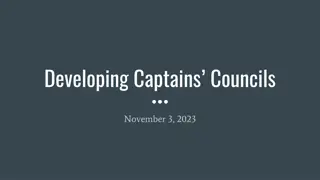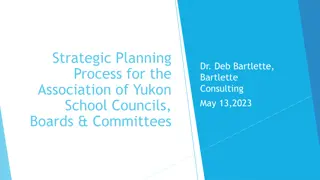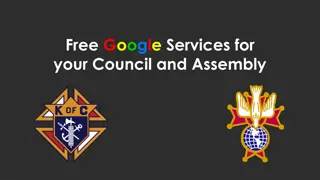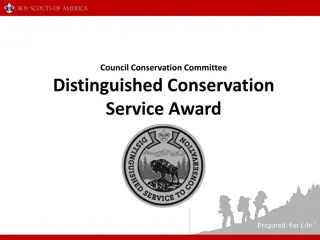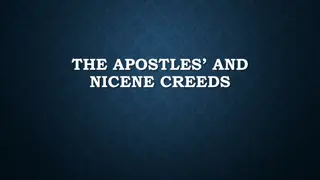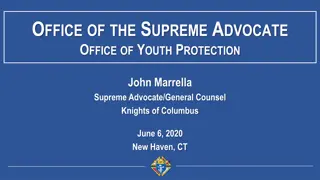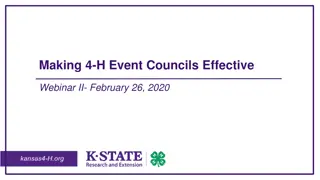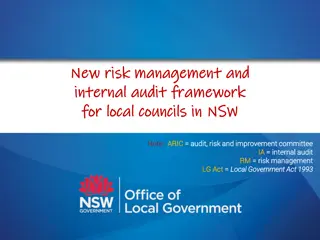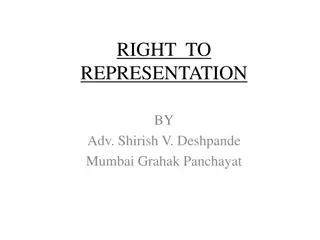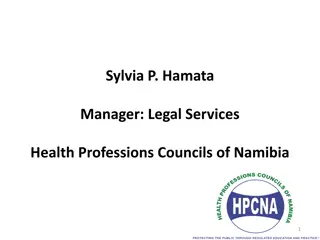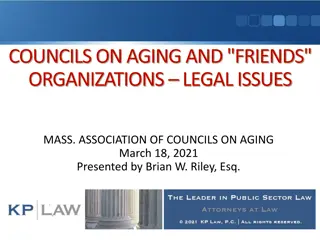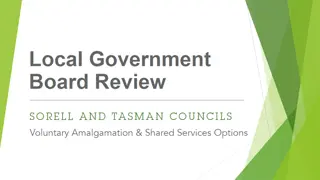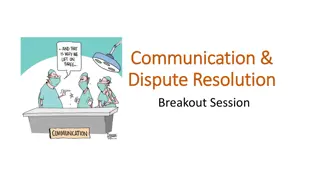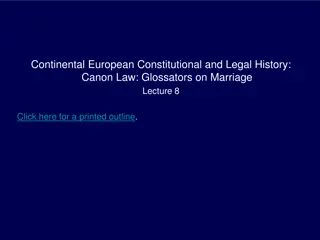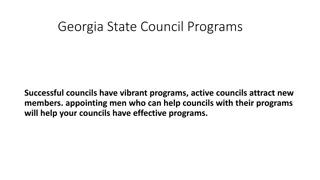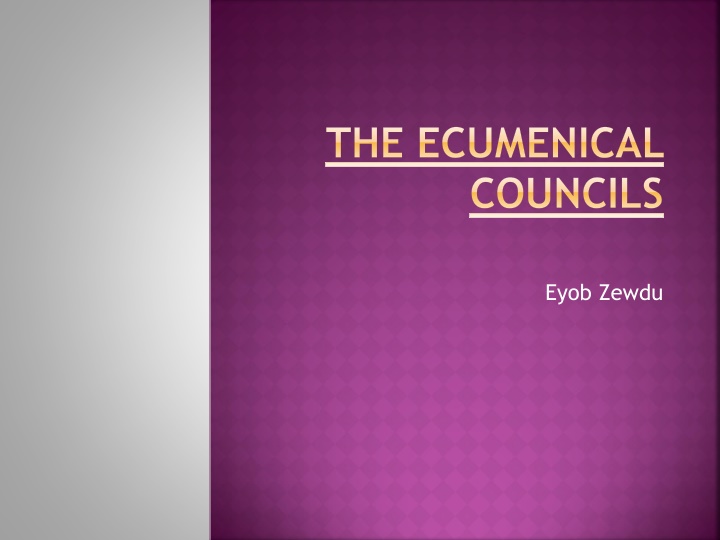
Ecumenical Councils and Their Role in Defending Orthodox Teachings
Discover the significance of ecumenical councils, the process of addressing heretical teachings, and the role of bishops in safeguarding orthodox beliefs. Learn about the historical context and decision-making processes involved in these important gatherings within the church.
Download Presentation

Please find below an Image/Link to download the presentation.
The content on the website is provided AS IS for your information and personal use only. It may not be sold, licensed, or shared on other websites without obtaining consent from the author. If you encounter any issues during the download, it is possible that the publisher has removed the file from their server.
You are allowed to download the files provided on this website for personal or commercial use, subject to the condition that they are used lawfully. All files are the property of their respective owners.
The content on the website is provided AS IS for your information and personal use only. It may not be sold, licensed, or shared on other websites without obtaining consent from the author.
E N D
Presentation Transcript
THE ECUMENICAL COUNCILS Eyob Zewdu
COUNCIL Coming together of bishops A council is a charismatic event It is a manifestation of the church
COUNCIL (CONTINUED) For a council to be ecumenical (ie. Imperial) it must be called by an emperor. Christianity only became legal in the 4thcentury in the Roman Empire so the first ecumenical council has to be around this time.
ECUMENICAL STATUS OF A COUNCIL For a council to become ecumenical Obvious and just cause Free and unanimous decision Uphold the apostolic faith Universal acceptance by the church
ACTS 15 -- In Acts 15, there were some men that went around telling everyone that if they weren t circumcised, they will not be saved. This was false teaching. Paul and Barnabas disagreed and took this question to the apostles and elders in Jerusalem.
ACTS 15 -- CONTINUED After a debated discussion to the question at hand, which involved over 300+ elders and apostles, they come together and make a decision as to correct the writings of the beliefs.
The idea of calling a council to denounce a heretical teaching and articulating upright (orthodox) teaching is not something we invented. It was practiced by the apostles.
THE COUNCIL FUNCTIONS AS FOLLOWS: There is some heretical teaching which arises in the church 1. This teaching spreads throughout the churches and begins to become a problem 2.
3. The emperor will then call a council of bishops which discuss and formulate a decree (a letter which explains exactly what the church believes) This letter does not exhaust the mystery (the teaching) but is sufficient to show the difference between the teaching of the church and the teaching which is misbelieving and being spread
4. This letter is delivered to all the churches all over the world along with bishops who were at the council (they can better explain the letter and answer any questions from people who weren t at the council).
5. The churches then receive the wording of the teaching decided upon by the bishops at the council and will denounce anyone who is spreading the false heretical teaching.
The Orthodox church did not deviate from the traditions it received from the apostles as they instructed us not to do so. So then, brothers and sisters, stand firm and hold fast to the teachings we passed on to you, whether by word of mouth or by letter. 2 Thessalonians 2:15.
Therefore, when new issues began arising in the church the bishops followed in the footsteps of the apostles of Christ and called councils. Today we will discuss 3 of these councils.
OUR OBJECTIVES The problem; (the false teaching) which brought the calling of the council The city where the bishops called the council The father(s) which were instrumental in articulating the proper Orthodox faith at the council The decree (main points of the decree) of each council.
1STCOUNCIL NICAEA Problem: Council was called to affirm the divinity of Christ which was being challenged by Arius.
ARIUS BELIEVED: The son is not true God. He was created ex nihilo (out of nothing) . There was a time when the son was not. (when he didn t exist) The son is not Co-eternal with God the Father. Neither is the Father eternal as Father because He didn t always have a son. The son is a creature but not one of the creatures. This point allowed him to raise Christ above all creation. The father created everything through the son. This allowed him to confess that Christ created everything in the world.
THE FATHER OF THE COUNCIL: Athanasius of Alexandria (deacon at the time of the council)
THE DECREE The Nicaea creed was the decree of the council. This decree contained 2 key terms which were used to set straight the theology of the church regarding Christ and his divinity. Homoousia (consubstantial) one in essence/ substance with the father. The same being. Begotten not made confirms that he isn t a creature. He is eternal.
2NDCOUNCIL CONSTANTINOPLE Problem: There were two of them for this council. Pneumatomachians [nu-ma-to-ma-ki-ans] or Macedonians the holy spirit is not a person (not true God like the Father and Son) Apollinarians were people who believed that Christ did not possess a human rational soul. The logos occupied the role of the nous (the soul)
FATHERS OF THE COUNCILS Basil and Gregory (they were brothers) and another Gregory were the fathers of this council.
THE DECREE The decree: two parts since there were two problems Against the pneumatomachians Last part of the creed regarding the Holy Spirit. And we believe in the Holy Ghost, the Lord and Giver of life, who proceeds from the Father, who with the Father and the Son together is worshiped and glorified, who spoke by the prophets.
THE DECREE Against the apollinarians Whatever Christ didn t become is not saved because this means He didn t unite this to His Godhead (his divinity). A soul is part of the human nature so if Adam sinned and his soul also fell along with his body, Christ must have saved Adam s soul as well as his body.
3RDCOUNCIL EPHESUS Problem: Nestorius, the archbishop of Constantinople, is begins teaching that The Virgin Mary must be called the mother of Christ and not the mother of God.
He does this because he believes that the Virgin Mary gave birth to and only to a complete human person. Then when asked how he believes God became man he answered God came down from heaven and joined himself to Jesus the son of Mary. God dwelt within Jesus the son of Mary.
So essentially, he believes that the being who was walking around on this earth for 33 years was actually two persons, one of them was human and the other was God/divine. Both used the same human flesh to express themselves. Essentially he believed that Jesus Christ was a schizophrenic.
THE DECREE Cyril formulated the hypostatic union of the word with the flesh assumed from the Virgin Mary. This meant that there was a full union between the divine and human natures in one person (hypostasis). Not the union of the divine and human persons in one body (prosopon) like Nestorius was saying.
Condemned a heretic for believing that Christ possessed a prosopic union (two persons coming together in one body) as opposed to a hypostatic one (two natures coming together in one person). Therefore, he believes that there was the person of the divine Logos, which united with the person of Jesus Christ the man. Therefore, he states that the virgin mary shall be called the Christokos as opposed to the theotokos because she hasn t given birth to the 2ndperson of the trinity (the Logos) but rather the person (body) he dwelt within.
[QUOTE] We believe in one person of God the Word incarnate quote from St. Cyril
Confirms that the Logos (2ndperson of the trinity) was not changed into a man and also wasn t united to a second person but rather was en-fleshed to become a man. (ie. There is a pre-existing person who unites himself to the human nature) We adore (worship) the person of Christ not the flesh
Therefore, since the Virgin Mary gave birth to this person who existed since eternity (and who we call God), she is rightfully called the mother of God. (Wuh-la-dee-tuh Am-lak is how you say mother of God in our language).
CONCLUSION So now we can see the process that the councils have to go through as a result of a problem that arises between the wrong beliefs spread by people and the word of God. AMEN.


